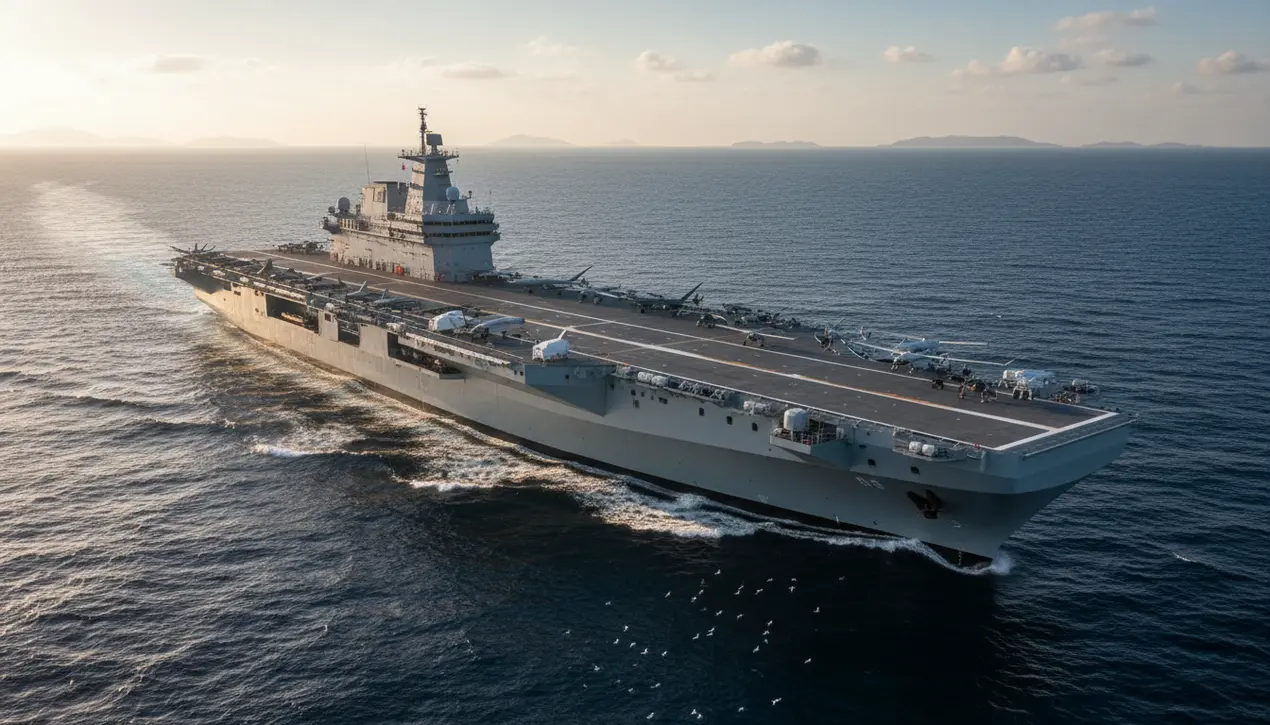
Politicsconflict & defenseMilitary Operations
China's new Type 076 drone carrier completes first sea trials.
OL
Oliver Scott
4 hours ago7 min read
China’s next-generation amphibious assault ship, the Sichuan, has successfully concluded its inaugural three-day sea trials, a development that signals a profound shift in naval warfare paradigms and carries significant implications for regional security dynamics. State broadcaster CCTV confirmed the vessel's return on Sunday afternoon, marking a critical milestone for the People’s Liberation Army Navy (PLAN) as it moves closer to commissioning its first Type 076, a class explicitly designed as a dedicated drone carrier.This isn't merely another ship launch; it's a deliberate, calculated move into a contested strategic domain. The trials, commencing Friday morning, were focused on assessing the fundamental reliability and stability of this supersized warship—a necessary first step, but one that belies the vessel's revolutionary potential.The Type 076 concept, heavily discussed in defense analysis circles for years, represents a hybrid solution, merging the traditional power projection capabilities of an amphibious assault ship with the forward-deployed, networked strike capacity of an aircraft carrier tailored for unmanned aerial vehicles (UAVs). Analysts at the Center for Strategic and International Studies (CSIS) have previously pointed to electromagnetic catapult systems, similar to those on the US Ford-class carriers, as a likely feature, enabling the launch of larger, heavier reconnaissance and combat drones.This capability would allow for persistent intelligence, surveillance, and reconnaissance (ISR) over vast oceanic areas, particularly in the contentious South China Sea, and could provide a lower-risk, high-endurance option for enforcing an anti-access/area denial (A2/AD) bubble. The strategic calculus here is clear: while a conventional carrier group represents a massive capital and symbolic investment, a drone carrier group offers a more distributed, potentially more resilient, and certainly more expendable force structure.The geopolitical risk is immediately apparent, most acutely for Taiwan, which sits squarely within the operational envelope of such a vessel based in the region. The Type 076 could fundamentally alter invasion scenarios, providing unparalleled situational awareness and sustained, long-loiter air support for amphibious landings without risking pilot lives.Furthermore, it projects a direct challenge to US naval primacy in the Western Pacific, offering a asymmetric counter to American carrier strike groups. Japan, the Philippines, and Vietnam will be watching the Sichuan’s progress with intense scrutiny, likely accelerating their own naval modernization and drone procurement programs in response.The broader context is an accelerating global arms race in autonomous systems, but China’s move to dedicate an entire capital ship to the concept is a first. One must consider the scenario where this technology proliferates; if China perfects the drone carrier model, it could become a template for other mid-tier naval powers, irrevocably changing the character of naval conflict. The completion of these sea trials is not just a technical box-ticked; it is the opening gambit in a new, more automated, and consequently more unpredictable chapter of great-power competition at sea.
#featured
#China
#PLA Navy
#Type 076
#amphibious assault ship
#drone carrier
#sea trials
#military technology
Stay Informed. Act Smarter.
Get weekly highlights, major headlines, and expert insights — then put your knowledge to work in our live prediction markets.
Comments
Loading comments...
© 2025 Outpoll Service LTD. All rights reserved.